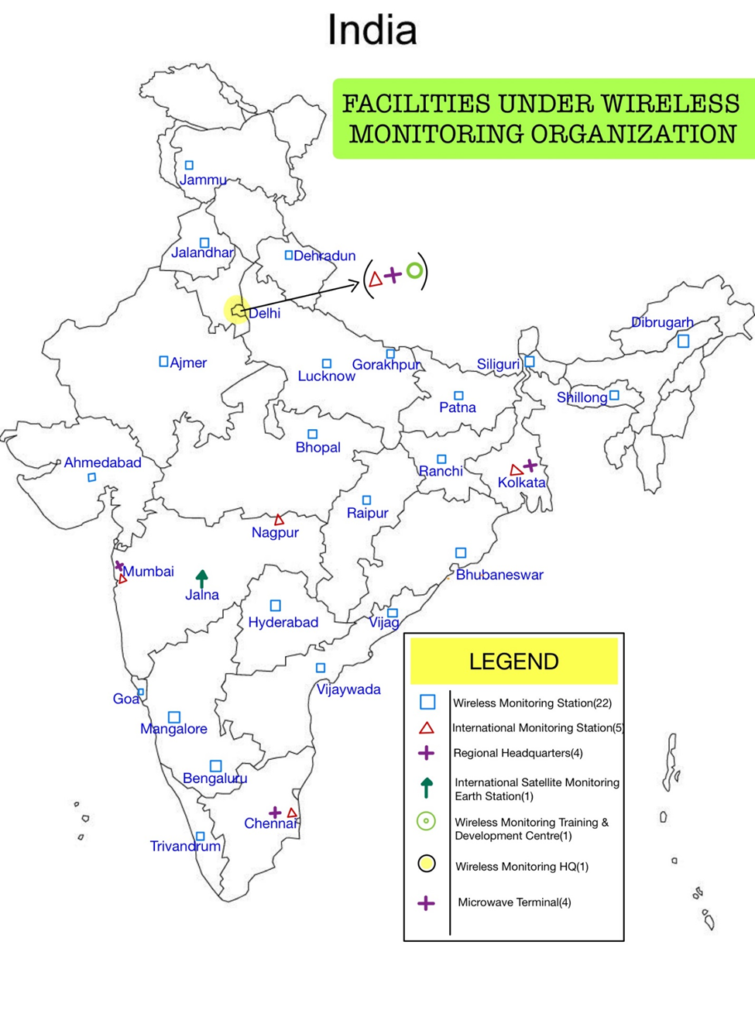In 1951, a series of international radio conferences culminating in the Extraordinary Administrative Radio Conference of International Telecommunications Union (ITU) held in Geneva, took number of decisions and necessitated intensive and detailed planning and coordination of wireless usage, a matter of extreme urgency and national importance. As a result, Wireless Planning and Coordination Wing was created in 1952 as a special branch of Ministry of Communications for securing the present and prospective requirements of radio communication services in India. Since then, WPC Wing has been carrying out functions of radio frequency spectrum management at national and international levels.
The Wireless Planning & Coordination (WPC) Wing of the Ministry of Communications is the national radio regulatory nodal agency of the Government of India and is responsible for planning, engineering, regulating, managing and monitoring the limited natural resources of Radio Frequency (RF) spectrum and satellite orbits, including geo-stationary (GSO) and non-GSO orbit as well as licensing of wireless stations in the country under the Indian Telegraph Act 1885 (ITA 1885) and the Indian Wireless Telegraphy Act 1933 (IWTA 1933), as statutory requirement. It caters to the needs of all wireless users in the country, government or private, security or civil. Wireless Monitoring Organisation is a field organization of WPC Wing dealing with monitoring and enforcement works of spectrum management. WPC Wing / WMO is also the nodal organization representing Government of India in the international forums such as International Telecom Union -Radiocommunication (ITU-R) under United Nations (UN) & Asia Pacific Tele-Community (APT)– the regional counterpart of ITU. Equivalent organizations in other parts of the world are Federal Communications Commission (FCC) of United States of America, Office of Communications (OFCOM) of United Kingdom (UK), Australian Communications and Media Authority (ACMA) of Australia & others.
The usage and licensing of radio spectrum-based services in India closely follows international laws of Radio Regulations (RR) developed under the aegis of ITU-R. It is the ITU-R, which in coordination with such national organizations, responsible for developing technology & radio spectrum standards and formulating regulations for, among others, immensely popular telecom services known as 2G, 3G, 4G & 5G. Availability of the clean spectrum is also the integral & essential part of our ambitious deep space missions such as Chandrayaan & Mars Orbiter Mission.
While radio spectrum has caught the due attention of general public due to explosive growth of cellular communications / broadband in our country, it is to be noted that there are 41 different types of radio communication services that require spectrum. These services include aeronautical, maritime, radio-navigation, radiolocation, radio astronomy, meteorological, broadcasting, satellite broadcasting, mobile, fixed, fixed-satellite, mobile satellite, space research services, etc.
Apart from telecom operators, radio spectrum is used by various Government and private organizations like Defence, Police, Intelligence and other Security agencies, Broadcasting, Railways, Public Utility Organizations, Oil and Electricity Utilities, Atomic Energy, Mining and Steel, Shipping & Airlines, and so on and for variety of applications like aeronautical and maritime safety communications, radars, seismic surveys, rocket and satellite launching, earth exploration, natural calamities forecasting etc.
The management of radio spectrum through IRRS cadre (WPC/WMO) is a continuous & ever evolving process. The process starts with planning, thereafter, allotment/licensing and remains ever-going activity in the form of technical monitoring & inspection with the ultimate aim of ensuring interference free operations to its authorized/licensed users.
